Skin Care
How Skin Care Creams Help with Dark Spot Treatment
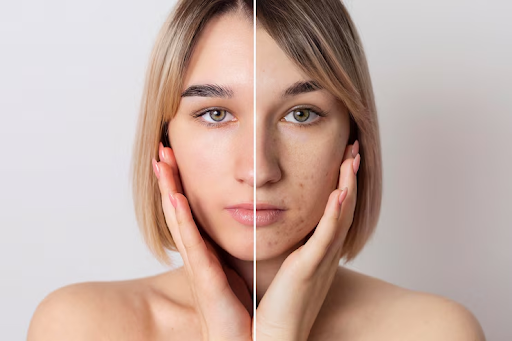
Dark spots, also known as hyperpigmentation, are a common skin concern caused by sun exposure, ageing, hormonal changes, and acne scars. These discoloured patches can affect confidence and make skin appear uneven or dull. Fortunately, many people are now turning to skin care creams as a gentle and accessible way to manage dark spot treatment without invasive procedures.
This article explores how skin care cream works, which ingredients are most effective, and what to look for when choosing the right product for your skin.
What Are Dark Spots?
Dark spots form when excess melanin—the pigment that gives skin its colour—collects in certain areas. Common causes include:
- Sun damage (solar lentigines or sunspots)
- Hormonal changes (melasma, often from pregnancy or birth control)
- Post-inflammatory hyperpigmentation (from acne, cuts, or eczema)
- Ageing (age spots or liver spots)
These spots typically appear on areas frequently exposed to the sun, such as the face, hands, shoulders, and arms.
How Skin Care Creams Treat Dark Spots
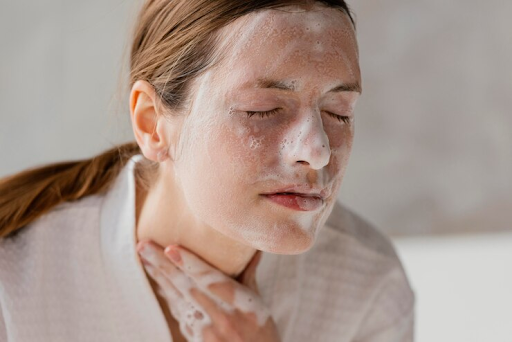
Skin care creams designed for dark spot treatment often work by either:
- Inhibiting melanin production to prevent further pigmentation
- Exfoliating the skin to speed up cell turnover
- Lightening existing pigment to blend with surrounding skin
Depending on their ingredients, these creams may offer fast or gradual improvement. Most require consistent use over several weeks or months to see visible results.
Key Ingredients That Help Reduce Dark Spots
The effectiveness of a skin care cream largely depends on its active ingredients. Some of the most commonly used and well-researched ingredients for treating dark spots include:
Vitamin C
Vitamin C is a powerful antioxidant that brightens the skin and reduces melanin production. It also protects against free radical damage and can improve overall skin tone.
Niacinamide
Also known as vitamin B3, niacinamide helps to fade dark spots by slowing the transfer of pigment to skin cells. It also soothes inflammation and strengthens the skin barrier.
Retinoids
Retinoids (including retinol) promote faster skin cell turnover, which helps fade dark spots over time. They also support collagen production and can improve texture.
Alpha Hydroxy Acids (AHAs)
AHAs like glycolic acid exfoliate the outer layer of dead skin cells, revealing fresher, more evenly toned skin underneath. They can be particularly effective for post-acne marks.
Hydroquinone
Once considered the gold standard for dark spot treatment, hydroquinone lightens existing pigmentation by inhibiting melanin synthesis. It should be used under professional guidance due to potential irritation or side effects with long-term use.
Kojic Acid
Derived from mushrooms, kojic acid works by inhibiting the enzyme responsible for melanin production. It is a gentler alternative to hydroquinone.
Licorice Extract
A natural brightening agent, licorice extract contains glabridin, which prevents pigmentation and has anti-inflammatory benefits.
Tips for Choosing the Right Cream for Your Skin
With so many products on the market, it can be overwhelming to choose the right skin care cream for dark spot treatment. Here are some tips:
- Know your skin type: Choose formulations suited to oily, dry, sensitive, or combination skin.
- Look for clinically proven ingredients: Products with vitamin C, niacinamide, or retinoids have scientific backing.
- Start with a patch test: Before applying to your entire face, test the product on a small area to check for irritation.
- Be consistent: Results often take 4–12 weeks with daily use.
- Avoid products with harsh alcohols or added fragrance: These can irritate sensitive skin and worsen pigmentation.
The Importance of Sun Protection
No matter how effective your skin care cream is, dark spot treatment is incomplete without proper sun protection. UV exposure is one of the leading causes of pigmentation and can undo progress made with topical creams.
Use a broad-spectrum sunscreen with SPF 30 or higher every day, even when indoors or on cloudy days. Reapply every two hours if you’re outside, especially if you’re using exfoliants or retinoids, which can increase sun sensitivity.
When to See a Dermatologist
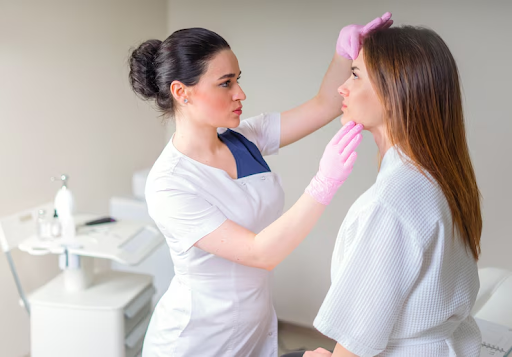
If over-the-counter skin care creams are not improving your dark spots after consistent use, or if you’re unsure about which treatment is best, consult a dermatologist. They can assess whether your pigmentation is superficial or deeper in the skin and may recommend:
- Prescription-strength creams
- Chemical peels
- Laser therapy
- Microneedling
- Other professional-grade treatments
Combining professional care with daily use of skin care creams can offer long-term improvement.
Conclusion
Skin care creams play an essential role in non-invasive dark spot treatment. With the right ingredients and consistent application, they can gradually fade hyperpigmentation, even out skin tone, and enhance overall skin appearance. While results vary by skin type and the cause of dark spots, combining creams with sun protection and good skincare habits offers the best chance of success.
Taking a proactive and informed approach to treating dark spots can help you achieve clearer, more radiant skin without the need for aggressive treatments or procedures.
See Also: Savvydispatches.com

Skin Care
The Product That’s Quietly Replacing Frizz Serums in 2025
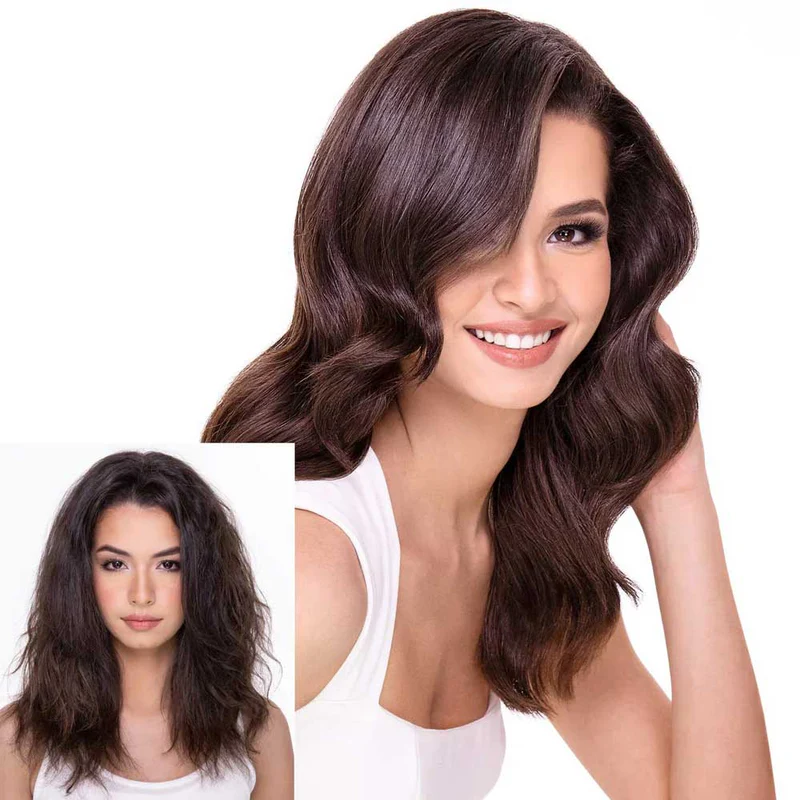
Key Highlights
- Traditional serums only mask frizz and add buildup over time.
- 2025’s haircare shift focuses on molecular-level smoothing and humidity protection.
- Products like colour wow dream coat create lasting shine and softness without residue.
- Stylists and consumers alike are embracing these new, smarter formulas.
- The future of haircare is simple: lightweight, intelligent, and built to last.
The End of the Sticky Serum Era
If your bathroom shelf looks like a small museum of half-used frizz serums, you’re not alone. For years, the promise of “smoother, shinier hair” has come bottled in slick formulas that often feel more like compromise than cure. A few drops too many and your hair is heavy. Too few and it’s still frizzy. The cycle of gloss, grease, and disappointment is one many of us know well.
Until recently, frizz control meant coating your hair with something that sat on the surface. These products could temporarily hide the problem, but they rarely solved it. What’s changing now is not just the packaging, but the science behind it.
In 2025, a new kind of product has started replacing those silicone-heavy formulas — one that doesn’t promise to tame your hair, but to transform it. This quiet shift in haircare is being led by a few standout innovators, and it’s redefining how we think about smoothness, shine, and long-term protection.
The new goal isn’t to fight your hair into submission. It’s to give it structure, strength, and humidity resistance that lasts far beyond a single wash.
What’s Really Behind Frizz and Why Serums Fall Short
Frizz isn’t just about weather — it’s about the way hair absorbs moisture from the air. Each strand is made up of overlapping layers called cuticles. When they’re flat and sealed, hair reflects light and stays smooth. But when they lift or crack from heat, colour, or dryness, humidity sneaks in. That’s when the frizz starts.
Traditional serums have always taken the easy route: cover it up. Most are built around silicone, which coats the strand to create a temporary gloss. It works for a few hours, maybe even a day, but it doesn’t fix what’s happening beneath the surface. The moment the coating fades or you wash your hair, the frizz returns.
Worse still, repeated use of these silicone-heavy products can weigh hair down or create residue that blocks moisture altogether. Over time, hair looks dull, tired, and less responsive to treatments. It’s a surface solution for a deeper problem.
The next generation of products isn’t about masking that damage. It’s about rebuilding protection from within — turning the outer layer of your hair into a shield that stays intact, even when the humidity spikes.
The New Science of Smooth: Where Tech Meets Haircare
The biggest change in haircare right now isn’t about a new ingredient, but a new approach. Instead of coating the hair, the latest formulas create an invisible barrier that bonds at a molecular level. It’s a shift inspired by both skincare and textile technology — think of how water rolls off a treated fabric, only this time it’s happening on each strand of your hair.
These new products are built around lightweight polymers and heat-activated sealing systems. When you apply them to damp hair and use a blow-dryer, they form a flexible, humidity-resistant layer that smooths the cuticle without weighing it down. The result isn’t a greasy shine but a sleek, glassy finish that lasts for days, not hours.
One of the most talked-about examples of this shift is colour wow dream coat. It uses a proprietary waterproofing complex that activates under heat, creating a lasting “raincoat” effect for the hair. Rather than sitting on top like silicone, it actually compresses and tightens the cuticle, sealing it shut against humidity.
It’s a rare case of hair science meeting everyday practicality. The finish is weightless, the feel is silky, and the difference shows from the first wash.
Why Everyone’s Talking About It (Even if They’re Not Saying So)
You’ve probably seen the results without realising it. The impossibly smooth blow-dry that still looks fresh after a gym session, or the glossy waves that survive a humid afternoon — chances are, this is what’s behind them.
Stylists have been quietly swapping out traditional serums for newer, tech-driven treatments that promise staying power without stickiness. Backstage at fashion weeks and in top salons, these products are becoming the secret weapon of every good blowout.
What makes them so effective is their simplicity. A stylist sprays it on before heat styling, and the hair transforms. There’s no residue, no stiffness, and no need for layers of products. Just clean, weightless shine that lasts through multiple washes.
The best part? It works on almost every hair type. Curly hair gains definition without frizz, fine hair holds its volume without feeling heavy, and thick hair stays smooth without constant retouching.
While few brands are leading the charge, it’s the technology itself that’s creating the buzz — a formula that finally delivers on decades of haircare promises.
A New Ritual for Real-World Hair
What’s happening in salons is now filtering into everyday routines. This new wave of anti-frizz care isn’t about adding another step to your routine — it’s about replacing a handful of them.
Instead of serum, oil, and finishing spray, a single lightweight mist does the work of all three. The process is simple: apply evenly to damp hair, section by section, and blow-dry with tension. The heat activates the formula, sealing in shine and sealing out humidity.
The difference is how it feels. Hair looks freshly blow-dried even after a few days, and the texture stays smooth without that coated, heavy sensation. Over time, consistent use strengthens the outer layer, making hair more resilient against heat, weather, and daily wear.
For many, it’s not just a new product — it’s a new ritual.
From Red Carpets to School Runs
This isn’t a trend limited to celebrities or stylists. Everyday users are finding that this new approach to frizz care fits real life. You don’t need a full styling routine or a professional blowout; it works just as well for someone who wants to air-dry and go.
It’s the balance between polish and practicality that makes it so appealing. It gives hair a healthy, reflective finish without making it feel “done.” The result is that natural, easy confidence that defines modern beauty — the kind that looks good in all weather, on every schedule.
For busy mornings, humid afternoons, or nights out that turn into mornings, it’s the kind of care that keeps up.
The Bigger Picture: Smart Haircare’s Next Chapter
The rise of intelligent, tech-based formulas signals something bigger in beauty — a move toward products that think like we do. Consumers are no longer impressed by flashy packaging or quick fixes. They want solutions that last, that fit their lives, and that make good hair days the rule, not the exception.
The new generation of frizz-fighters is part of that movement. It’s about hair that behaves the way it should, not because it’s been styled into submission, but because it’s been cared for intelligently.
In 2025, the best products don’t promise perfection. They promise consistency — and they deliver.
Skin Care
Five major skincare benefits of Hydrodermabrasion Facial Machines
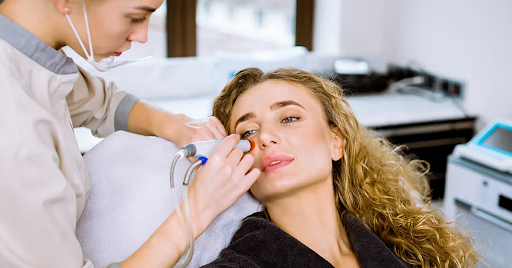
Hydrodermabrasion is a modern skincare treatment that cleans, exfoliates, and hydrates the skin at the same time. The machine uses water, suction, and nourishing serums to remove dead cells and clear pores. The process helps skin look fresh and smooth. It improves glow without causing dryness or redness.
Researchers confirm that hydrodermabrasion increases skin hydration and reduces roughness. Dermatology experts report better collagen production after regular sessions. Studies published in clinical journals show smoother skin texture and smaller pores after treatment. Analysts also note that this method suits many skin types, including sensitive ones, because it avoids harsh abrasion.
Clear, glowing skin builds confidence. Hydrodermabrasion offers a clean, bright, and healthy look in a safe way. The gentle water-based process refreshes skin from the inside out. With visible results after each session, this skincare tool proves that simple, consistent care can bring lasting change.
What hydrodermabrasion does to the skin
- The device exfoliates the outer skin layer. It lifts dead cells. It clears surface buildup. Skin texture becomes smoother. Clinical studies report measurable improvement after treatment.
- The machine uses suction to clear pores. The action reduces visible blackheads and whiteheads. Pore appearance shrinks as debris clears. Patients often report cleaner pores after one session.
- The device infuses hydrating serums while it exfoliates. This step restores moisture to the epidermis. Skin looks plump after treatment. Trials show hydration levels rise after treatment.
- The treatment supports a brighter skin tone. Removal of dead cells reveals fresher skin. Serums with antioxidants reduce dullness. Pigmentation evens out over repeated sessions. Dermatology reviews list brightening as a common outcome.
- The procedure can help reduce fine lines and roughness. Exfoliation stimulates a gentle renewal response in the skin. Collagen support follows repeated sessions. Histological studies reveal increased dermal thickness following treatment.
Five major benefits explained
1. Deep exfoliation for instant smoothness
Hydrodermabrasion removes the outermost dead cells. Skin becomes smoother right away. This change helps makeup sit better. This change helps topical actives work better. Sources confirm improved texture after treatment.
2. Cleaner, smaller-looking pores
The device uses suction to extract pore build-up. Pores look smaller once the blocked material clears. This effect reduces shine caused by trapped oil. Clinics report high patient satisfaction for pore cleaning.
3. Boosted skin hydration
Hydrodermabrasion delivers serums during treatment. The serums contain humectants and antioxidants. The combination restores moisture. Clinical data shows a rise in measured hydration following sessions.
4. Brighter tone with less dullness
The process removes darkened surface cells. The process helps fade mild post-inflammatory marks. Specialized serums support pigment control. Repeated sessions gradually even out the skin tone. Clinical reviews list tone improvement as a primary benefit.
5. Reduced fine lines and improved firmness
Exfoliation triggers a skin renewal pathway. Renewal supports collagen activity. Over time, skin gains more resilience. Histology shows dermal thickening after hydradermabrasion. This change explains visible fine line reduction.
Who benefits most
People with dry skin gain hydration. People with oily skin gain pore-clearing. People with mild acne scars gain texture improvement. People with sensitive skin gain a gentler alternative to harsher methods. Specialists note suitability across many skin tones. Clinical reviews support broad use.
Safety and limits
Hydrodermabrasion suits many patients. Active infections and severe rosacea require avoidance. The procedure spares deep dermal layers. Side effects remain mild when licensed providers perform treatment. Experts recommend a patch test for new serums. Research shows no major long-term harm in studied groups.
How to get the best results
Start with a professional consultation. The clinician will assess skin type and goals. Follow a short pre-treatment plan if needed. Use a simple home routine after treatment. Avoid harsh exfoliants during the recovery window. Repeat sessions produce cumulative results. Evidence supports regular maintenance for lasting benefit.
Practical comparison with microdermabrasion
Hydrodermabrasion uses water plus serums. Microdermabrasion uses crystals or diamond tips. Hydrodermabrasion hydrates while it exfoliates. Microdermabrasion can remove thicker scars more deeply. Choose the method that fits skin goals. Dermatology reviews explain the pros and cons of each.
Conclusion
Hydrodermabrasion pairs removal with renewal. The machine strips old cells. The machine fills the skin with actives. The result shows as cleaner pores, firmer skin, brighter tone, better hydration, and fewer fine lines. The method fits many skin types. Use a licensed provider. Track progress with photos. Trust peer-reviewed evidence when you claim a clinical benefit. This path yields safe, visible skin change when experts deliver treatment.
Skin Care
Can You Remove Warts Without a Doctor? Here’s How
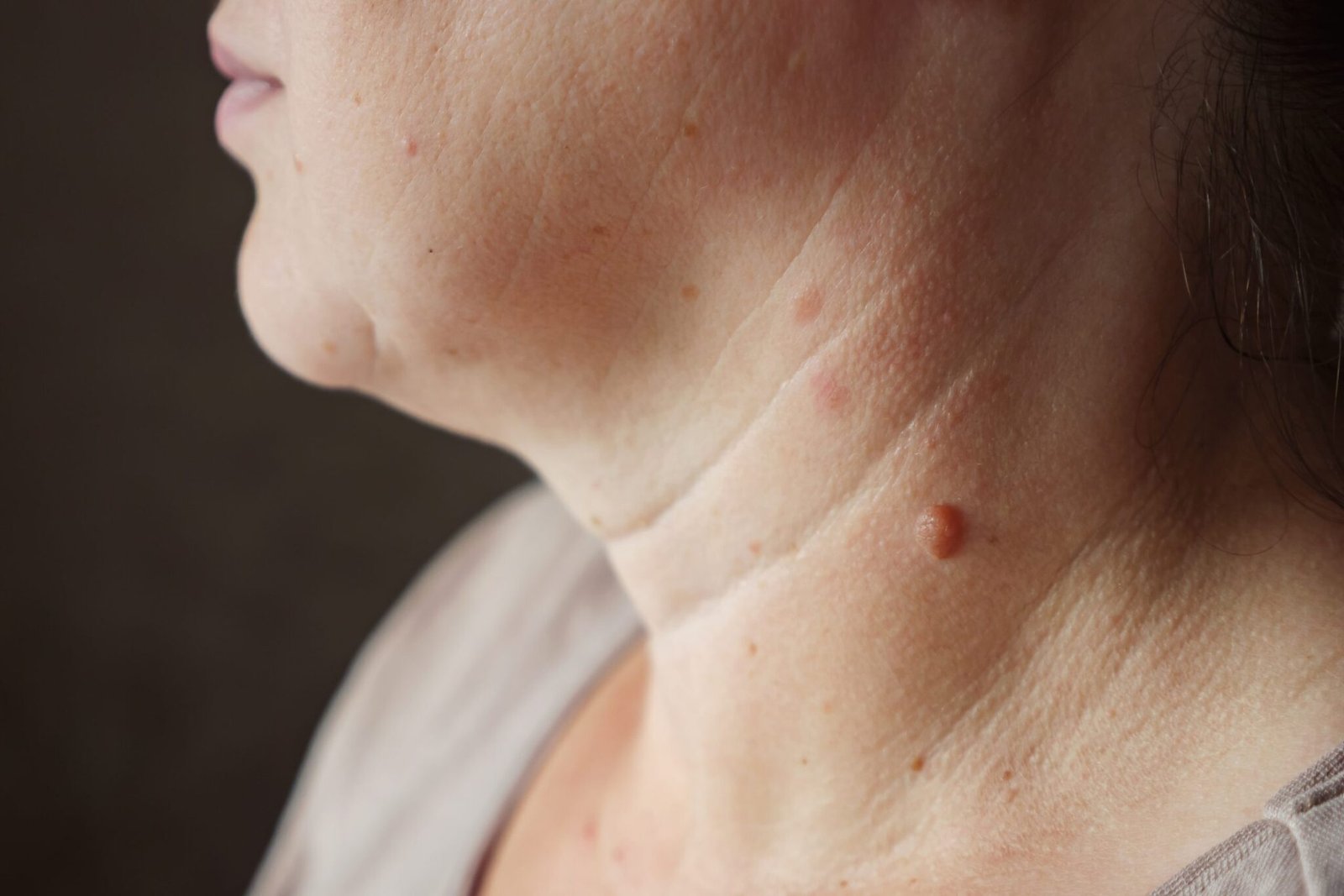
Warts are one of those skin annoyances that seem to pop up at the most inconvenient times. Whether on your hands, feet, or other areas, they can make you feel self-conscious. But the question many people ask is: Can you remove warts without a doctor? While it’s always best to consult a healthcare professional if you’re unsure about a wart, there are several ways you can remove warts on your own without a trip to the doctor’s office.
Understanding Warts: What Are They and Why Do They Form?
Before we jump into remove warts methods, let’s quickly look at what warts are and why they form. Warts are caused by a viral infection in the skin, specifically the human papillomavirus (HPV). The virus enters the skin through tiny cuts or breaks and causes the skin cells to grow rapidly, forming a wart. They’re contagious, meaning they can spread through direct skin-to-skin contact or even from surfaces where the virus has been present.
1. Over-the-Counter Treatments: A Convenient Option
One of the most common ways to remove warts is by using over-the-counter (OTC) treatments. These products are specifically designed to target warts and help remove them at home. You’ll find various options in the pharmacy, such as gels, creams, and pads, containing active ingredients like salicylic acid.
How It Works:
Salicylic acid works by gradually softening and dissolving the skin that makes up the wart. It can take time and persistence to removal warts using this method, but many people find it effective when used consistently.
Steps to Use Salicylic Acid:
- Soak the Wart: Start by soaking the affected area in warm water for about 10-15 minutes. This softens the skin, making the wart easier to treat.
- Apply the Treatment: Use the product as directed on the packaging, usually by applying a thin layer of salicylic acid directly to the wart.
- Cover the Wart: Some products come with adhesive pads to keep the treatment in place. Use these as directed to ensure the wart is constantly treated.
- Repeat the Process: It may take several weeks of consistent treatment before the wart is gone, so patience is key.
2. Cryotherapy at Home: Freezing Warts for Removal
Another effective way to warts remove without a doctor is by using cryotherapy, which involves freezing the wart with liquid nitrogen. While cryotherapy in a doctor’s office is often performed with medical-grade equipment, you can now buy home cryotherapy kits that use a similar freezing process to treat warts at home.
How It Works:
Cryotherapy works by freezing the wart tissue, causing it to die and eventually fall off. While it’s effective, it may be slightly uncomfortable, and the wart may take a couple of weeks to fully disappear.
Steps to Use Cryotherapy at Home:
- Clean the Area: Wash the area around the wart to ensure no dirt or oils will interfere with the treatment.
- Apply the Freezing Kit: Follow the instructions on the cryotherapy kit carefully. Usually, this involves placing a special applicator on the wart to freeze it for a few seconds.
- Protect the Skin: After applying the freezing treatment, protect the surrounding skin with a bandage or padding, as the area may be sensitive.
- Repeat if Necessary: You may need to repeat the process a few times to completely remove the wart.
3. Home Remedies: Natural Wart Removal Techniques
Some people prefer using natural remedies to remove wart. While not all of these methods are backed by science, many individuals find success with these tried-and-true techniques. Here are a few popular home remedies that you can try to remove warts naturally.
Apple Cider Vinegar (ACV)
ACV is known for its acidic properties, which some believe can help to dissolve warts. It works similarly to salicylic acid by softening the skin and breaking down the wart tissue over time.
How to Use ACV:
- Soak a cotton ball in apple cider vinegar and apply it directly to the wart.
- Cover it with a bandage and leave it on overnight.
- Repeat nightly until the wart falls off.
Duct Tape Method
The duct tape method involves using the adhesive side of duct tape to suffocate the wart and encourage it to fall off. While it might sound odd, research has shown it to be an effective option for some people.
How to Use Duct Tape:
- Apply a small piece of duct tape over the wart and leave it in place for 6 days.
- Remove the tape and soak the area in warm water. Gently file away the wart with a pumice stone or nail file.
- Reapply the tape and repeat this process until the wart is gone.
4. A Nontraditional Approach for Wart Prevention?
While you might not think of goodwill bins when it comes to wart removal, some people claim that keeping your skin clean and covered in public spaces helps prevent the spread of the virus. While this isn’t a removal method per se, preventing the spread and protecting areas where warts might pop up could be a helpful step.
Always be cautious when touching public items, and consider wearing gloves in places with high foot traffic to avoid exposure to HPV.
Conclusion: Can You Remove Warts Without a Doctor?
Yes, you can remove warts without a doctor! With patience and consistency, using over-the-counter treatments, home remedies, and cryotherapy kits, you can effectively remove warts yourself. However, if you notice unusual changes in the wart or experience persistent discomfort, don’t hesitate to seek professional help.
Remember, wart removal is often a gradual process, and while you may want quick results, it’s essential to follow the instructions and give the treatments time to work. Keep in mind that maintaining good skin hygiene and taking preventative measures can help reduce the risk of future warts.

 Blog10 months ago
Blog10 months agoHow to Deal with Scabies While Traveling

 Travel10 months ago
Travel10 months agoRichmond, Virginia Street Art Guide

 Travel10 months ago
Travel10 months agoPerhentian Islands: How to Get There, What to Expect, & More

 Travel10 months ago
Travel10 months agoHow to Live in Your Car in New Zealand

 Travel10 months ago
Travel10 months agoSouvenir in Nepal: A Guide to Unique Handicrafts and Cultural Treasures

 Travel10 months ago
Travel10 months agoVegan Guide to Dining Out in Richmond, Virginia

 Food10 months ago
Food10 months agoVegetarian Food Nepal: A Journey into Flavorful Plant-Based Cuisine

 Travel7 months ago
Travel7 months agoA Local’s Guide to Sanibel Island, Florida














